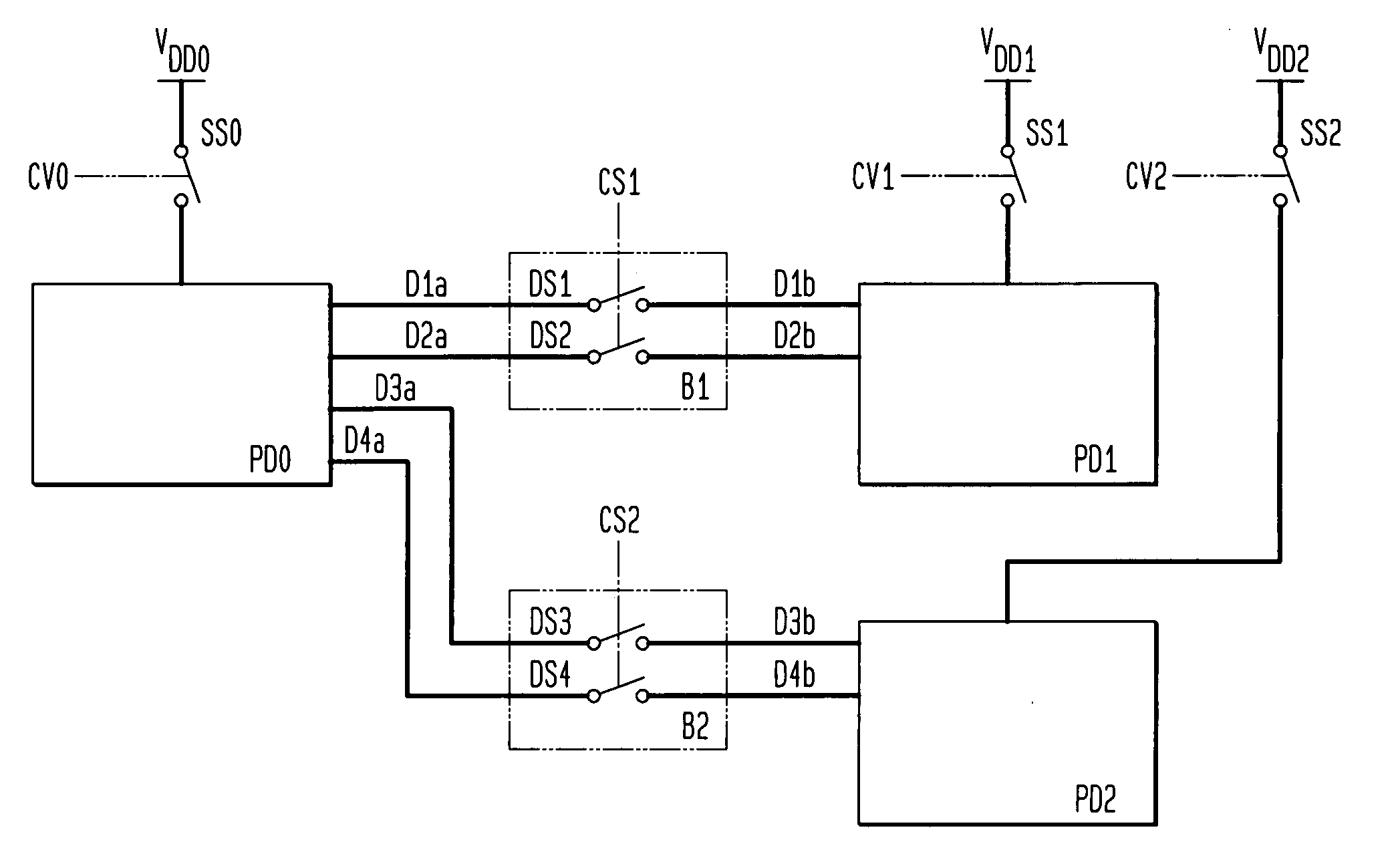Integrated circuit with multiple power domains
a technology of integrated circuits and power domains, applied in the direction of pulse techniques, process and machine control, instruments, etc., can solve the problems of significant power consumption in a circuit, leakage current still tends to flow through the sleep transistor, etc., to reduce leakage current, minimize leakage current, and save power
- Summary
- Abstract
- Description
- Claims
- Application Information
AI Technical Summary
Benefits of technology
Problems solved by technology
Method used
Image
Examples
Embodiment Construction
[0011] As described in the Background above, past approaches to power management in integrated circuits have centered around the use of sleep transistors that shut off the power supply for a given load circuit. The present inventors have recognized that even where sleep transistors are used in this fashion, significant leakage currents may still flow in the load circuit as a result of the data signals that may be present at the input terminals of the load circuit. The invention solves this problem by inserting a buffer cell that transparently passes data signals to the load circuit when the power to the circuit is “on” (not disconnected by the sleep transistor) but prevents data signals from reaching the load circuit when the power to the load circuit is “off.”
[0012] An integrated circuit in accordance with the present invention is shown in FIG. 2. The circuit comprises two or more power domains PD0, PD1, PD2 that include one or more load circuits (not shown). The load circuits in p...
PUM
 Login to View More
Login to View More Abstract
Description
Claims
Application Information
 Login to View More
Login to View More - R&D
- Intellectual Property
- Life Sciences
- Materials
- Tech Scout
- Unparalleled Data Quality
- Higher Quality Content
- 60% Fewer Hallucinations
Browse by: Latest US Patents, China's latest patents, Technical Efficacy Thesaurus, Application Domain, Technology Topic, Popular Technical Reports.
© 2025 PatSnap. All rights reserved.Legal|Privacy policy|Modern Slavery Act Transparency Statement|Sitemap|About US| Contact US: help@patsnap.com



